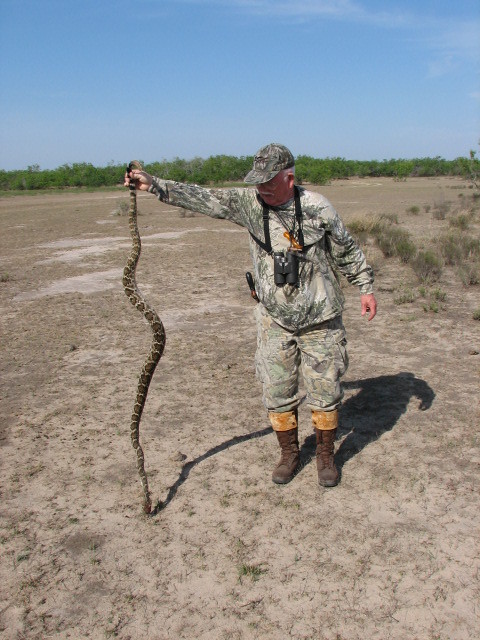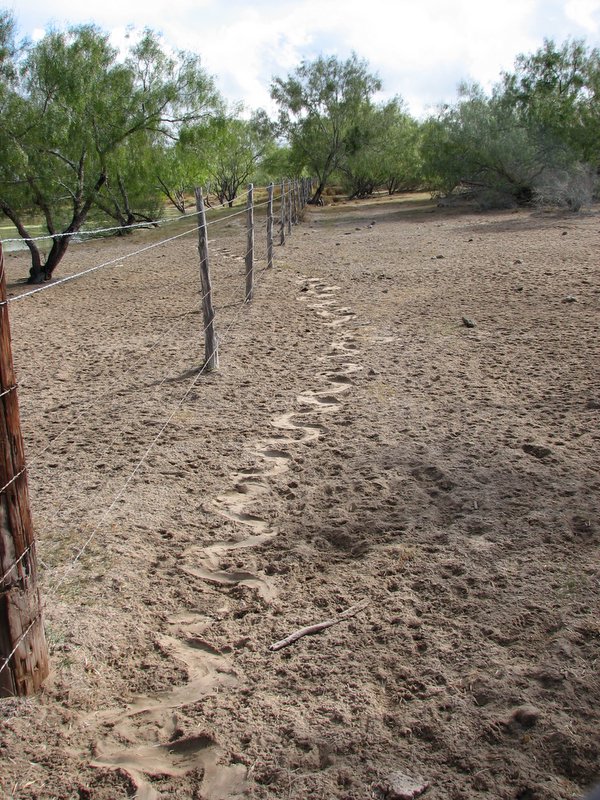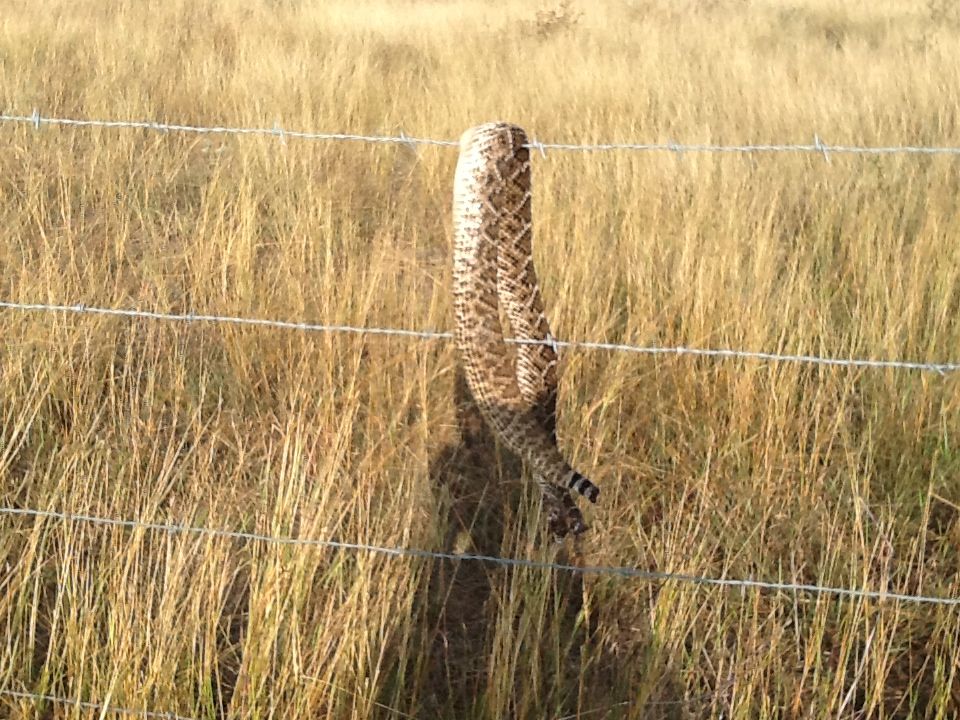Originally Posted By: Ernest IIDoes anyone really know about rattlesnake bites. Im talking here where I live Indiana.I squirrel hunt in rattlesnake country. I have seen a few.What are the chances and what should one do if they they get bitten by one of these snakes?
I have done a little reading but still not sure. Are snake proof boots really that protective. I do watch where I sit while out in the forest.
Thanks
Daryl P.
I'd guess that your chances of being bitten by a rattler in In. would not be too great. That doesn't mean you should be careless.
As for snake proof boots, I don't hunt without them in S. Texas, but we have a lot more snakes than you do up north. Are they really that protective? Prolly not, down here anyway:
[font:Arial Black]They get pretty big down here. Here is a rattler track in some soft sand which I tracked to (or from) a large brush pile where I lost interest
. The track was wider than my 10EEE boot to put it in perspective.
I do worry a bit more about the smaller snakes, however, since they are a bit less sluggish and harder to see.
The experts have changed their recommendations as to how to proceed if bitten over the years. When I first started hunting a long time ago, everyone carried a snake bite kit and were advised to make x shaped cuts over fang marks and use the suction cups to suck out the venom. Later they said more damage could be done with this method and some recommended putting ice on the bite to slow movement of venom, then there were the anti-venin kits.
Last I heard, recommended treatment is, if you can get to the hospital within an hour, identify the species of snake (if it can be done safely), try to remain calm, do not use tourniquet or ice and proceed to hospital. That is what I plan to do if, God forbid, I should ever be bitten.
Another thing about snakebite is that not all result in venom being injected for a number of reasons, so not all bites are equal.
Hopefully Chupathingy will weigh in on this thread as he is the resident expert on snakes.
Regards,
hm









